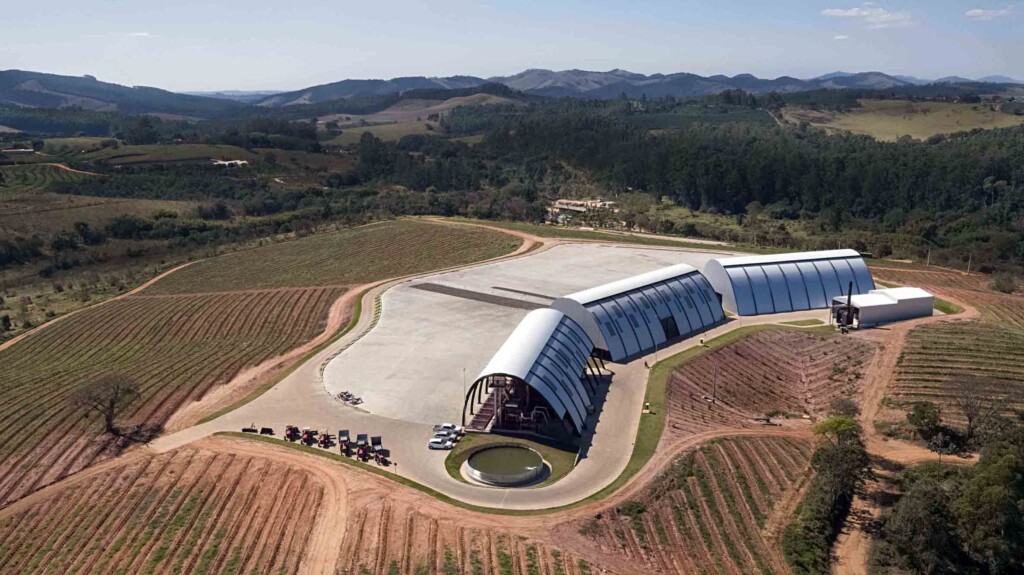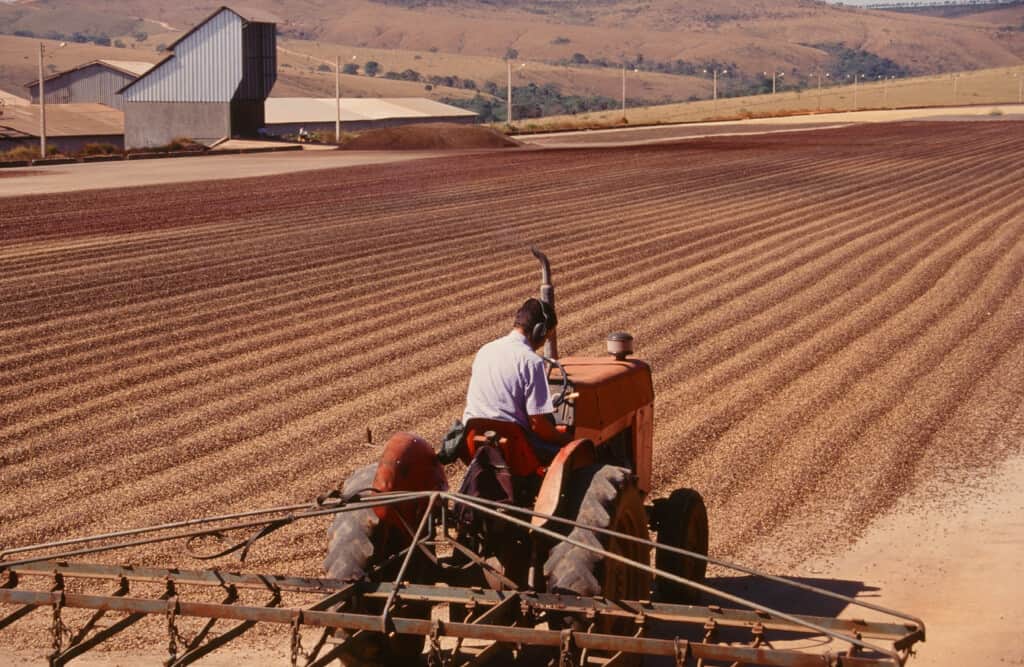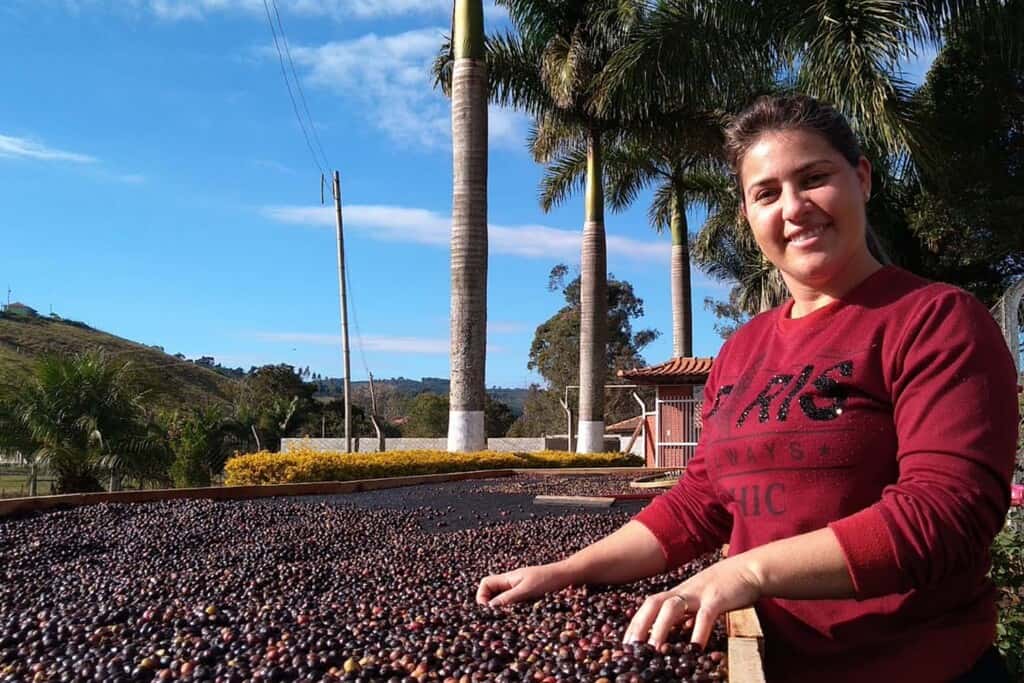
Mill committed to smaller-lot specialized coffees at Ipanema Farms in the Sul de Minas growing region, Brazil. Courtesy of Ipanema Farms. When I initially opened a specialty café in Berkeley, California 40 years back, a Brazil constantly appeared amongst the basic whole-bean coffee offerings in the 10 approximately glass-fronted bins that held our whole-bean coffees. All of the attractive and popular coffee origins of the time were there: Guatemala Antigua, Kenya AA, Costa Rica Tarrazu, Sumatra Mandheling, Colombia Supremo, and the new, game-changing Ethiopia Yirgacheffe. Brazil Santos, as we liked to call it(all of these origins had to sport at least one secondary qualifying name ), was typically down at the end of the row, mostly looked past when consumers bought a pound of Kenya or Guatemala. However some clients did purchase Brazils. I keep in mind one particularly coffee-savvy young staff member who skillfully worked our Gaggia two-group piston espresso maker, declaring, a little defensively, that Brazil was his preferred origin. He stated he liked its low-key balance and its nut, chocolate and spice notes. He discovered the other more glamorous origins we brought too bright, too one-sided, too insistent.
However there were only a few like him at that time, and today, it appears like there are even less. In reality, it appears, from this month’s low turnout of Brazil submissions from North American specialty roasters, that Brazil, by far the world’s largest producer of coffee, is one of the smallest when it concerns upmarket specialty lists of American roasters.
We received only around 30 samples for this report, rather than the 60 or more we normally get for studies of other origins. But the real shock was the low turnout from North American roasters. Only 7 American-roasted Brazil samples showed up! The other 24 were roasted by Asian business, all based in Taiwan.
Do not blame the coffees themselves. The 30 samples we checked averaged around 89 on the Coffee Review scale, an outstanding proving. And we ran into no coffees at all displaying composty tastes or medicinal tips, for example, 2 failings of poorer quality coffees all over. These were mostly strong, drinkable coffees whose main stopping working was simplicity or a type of aromatic laziness.
But if we move from the also-rans to the very best of this month’s Brazils, we come across some really, very great samples. Prior to going over how and why they are remarkable, I need to back into a brief account of the history and character of the classic Brazil cup.
The Backbone of Specialty: Brazil Naturals
This cup is acidy or seldom intense– credit moderate-to-low growing elevations. It is normally produced from quite respected tree ranges, with pleasing balance and subtle fruit, but without the aromatic fireworks of Ethiopia-derived material like Geisha/Gesha, for example. It is natural-processed, meaning the coffee fruit is simply chosen (typically by device) then spread to dry on patio areas.
The common outcome is a coffee with pleasing mouthfeel, a structure low and normally round in acidity, with fruit favoring chocolate and nut rather than citrus and flowers.

Raking pulped-natural procedure coffee in the Cerrado Miniero region of Brazil. Thanks To Kenneth Davids. None of that sounds particularly exciting, does it? This relatively drab story and pleasing however low-drama cup are most likely the reasons why so couple of roasters sent us Brazil samples. They do not search for fantastic Brazils, so, presumably, they don’t discover them, and if they do not find them, then their consumers won’t, either. The roasters look for Brazils to fill out the middle of blends and balance more assertive coffees, not something to stand by itself making its own case. “I believe U.S. roasters overlook Brazils far too quickly when looking for something ‘unique’ and ‘interesting,’ something to ‘push the market forward,'” says David Pittman of Peach Coffee Roasters.
Pressing (Or a minimum of Nudging) the Industry Forward
But some Brazil manufacturers are intending to “press the industry forward,” as it ends up. And some roasters have started to take them up on it. Of the 8 top-rated coffees that complete this month’s evaluations, five play definitive but subtle variations on Brazil natural processing that expand the style in ways both distinctive and delicious. Two others amongst the 8 represent Brazil’s special gift to processing approach, the pulped natural. Only one embodies the custom of the traditional Brazil natural, although it embodies it especially well.
In the natural process, naturally, the beans or seeds stay encased inside the whole fruit all the method from choosing to drying. Nevertheless, with 5 of the samples we checked for this report, the whole fruit went through an unconventional fermentation action before being infected dry.
Whole-Fruit Fermentation as Sensory Game-Changer
Fermentation, of course, has long been an essential action in standard wet-processing, where it is used to soften sticky fruit flesh so it can be more quickly “washed” off the beans. But with this month’s unconventional Brazils, fermentation was applied to the coffee in the whole fruit as a clear attempt to improve last cup character and originality, rather than merely help with a mechanical procedure.
I’m believing that a plausible name for this processing variation may be “boosted natural.” Among other benefits, the fermentation step might decrease drying, therefore intensifying the advancement of fruit and sweet taste and avoiding the too-rapid drying of the fruit that, in conventional natural Brazils, may turn fruit notes prune-like and promote a dry, woody cup.
The specific nature of the fermentation step differs in all five of these “enhanced naturals.” In the case of the top-rated Kakalove Café Fazenda Samambaia Natural Fermentation Arara (95 ), the fruit was fermented in (apparently open-topped) barrels for 4 days before the usual drying on raised beds. This ferment was a bit longer than in the case of some other samples we evaluated and seems to all at once encourage great sweet taste and savory-edged depth, plus add an intrigue of grappa-like spirits.
The fermentation step also lasted around 4 days for the deeply sweet yet resonantly bright Euphora Coffee Ipanema Premier Cru Gold A49 Cherry (93 ), however in this case, the ferment was anaerobic (performed in sealed, instead of open, tanks). So here, instead of a tickle of spirits produced by a light hint of alcohol-inducing aerobic fermentation, as in the Kakalove Samambaia, we experience a deep, sweet tanginess, vigorous and bracingly bitter-edged. With the Spix’s Café Brazil Red Catuaí Double-Anaerobic (93 ), the ferment was likewise anaerobic, netting another deep yet delicately bright/tart coffee, filled by a distinct dark chocolate with a cherry and flower edge.
The CafeTaster Mogiana Aparecid Farm (93 ) was obviously just gently fermented before drying, netting a delicate yet deep profile: cocoa, blood orange, flowers.
An American “Enhanced Natural” Candidate and Two Pulped Naturals
Finally, the one American-roasted entry in what I am calling the enhanced natural classification, Peach Coffee Roasters Sitio Ponte Fazenda Ponte (93 ), was also subject to only a short spell of controlled dry fermentation prior to being spread on the terraces. I found it an especially rewarding cup, nevertheless, a Brazil natural driven by the apple, caramel and almond common of the style, yet carefully saturated with flowers, all supported by an especially fragrant cedar.

Natural procedure coffee drying on a raised bed at Sitio Taquara farm, Campestre, Minas Gerais State, Brazil. Envisioned with Edimara Bernardes, the child of the producer. Thanks To Demilson Batista Jr. 2 of the eight examined Brazils were not naturals at all, strictly speaking, however processed by the technique Brazilians call pulped natural, a treatment that the rest of the world has actually familiarized as honey-processing. Brazilians originated the method, although their rather technical name for it has actually stayed at home. In the Brazil variation, only the skins are removed from the coffee fruit, and the beans, still covered in their sticky fruit flesh, are put out to dry directly on patios. They require to be raked rigorously at first, or the beans are most likely to clump and mold. Done right, Brazil pulped naturals generally produce a sort of natural-lite cup; more delicate than many naturals, a bit brighter and lighter, more floral. The outcome can be a svelte, balanced Brail cup, clean and silently layered, like the Willoughby’s Brazil Legender Sitio Taquara Natural (92 ). However the technique also can motivate more distinct profiles, like the Mostra Coffee Sitio Pedra Menina (93 ), here carefully tart and aromatic with floral and herb subtlety.
And a Last No-Frills Natural
Lastly, we did have one uncomplicated Brazil-style natural amongst the eight top-rated samples– simply put, a coffee dried in the whole fruit straight through with no ferment step or processing variations. The simpleness of ways appears shown in the pleasing directness and grace of the Brazil Natural Veloso Estate from Taiwanese roaster Min Enjoy Café (93 ). “A silently transcendent Brazil natural cup, harmonious and incorporated,” co-cupper Kim Westerman writes.
Tree Variety and Brazil
Tree range, together with processing technique the other main driver of modification and enjoyment in specialty coffee today, did not seem to figure prominently among the Brazils we surveyed. Brazil has tended to stick with tree ranges that are productive and respected for their cup character but not particularly commemorated for their diversity. So, on one hand, no lavish Geishas or other unique Ethiopia escapees, but, on the other, no ranges greatly dumbed down with Robusta genes either. The range most often appearing among this month’s samples is Catuaí, a cross between Caturra (the widely-grown, compact-growing choice of Bourbon) and Mondo Novo, itself a cross in between Typica and Red Bourbon. My experience suggests Catuaí can be depended upon to produce a total, vibrant, well-structured cup, though generally not a particularly distinct one.
The Brazil “Aha” Moment
So, ok, Brazils may not rattle your saucers with shock and aromatic excitement, but they do have their supporters among those roasters who sent this month. Several mentioned a particular “aha” Brazil moment, a Brazil coffee that challenged expectation. David Hsiao at Min Enjoy Café uses consumers blind tastings, and when he included this month’s timeless Brazil natural his consumers were rather satisfied. “Someone guessed it was Colombia, someone stated Panama, someone guessed Costa Rica,” he reports. “When the hole card was revealed, every consumer revealed a shocked expression and stated, ‘Is this truly coffee from Brazil?’ They couldn’t believe it was so scrumptious!” Other roasters used similar stories about specific coffees that challenged clients’ expectations about Brazil.

Warehouse of a coffee mill in Alfenas, Minas Gerais State, Brazil. On the other hand, some roasters expressed gratitude for the very dependability of Brazils, for their familiarity and their capacity to satisfy a wide variety of tastes. David Pittman of Peach Coffee Roasters sees Brazils as a “gateway to the non-specialty coffee drinker,” and includes that “this is the customer we at Peach are trying to reach.” Ryan Sullivan of Mostra Coffee explains the value of Brazils in very first developing his roasting company in a geography new to specialized coffee, and how important Brazils have actually stayed. “Brazil is always in the top five very popular coffees and, as a single-origin, Brazil is our top-selling coffee over the course of the year. We would be a different company without Brazil to use, and I do not think our clients would be too happy with us!”
Familiar Yet Fresh
Lastly, the appeal for me of many of this month’s top-rated Brazils, particularly those I am calling “improved naturals,” is the way that they both support yet transcend our expectations. In drinking them, we may enjoy a number of the fulfillments of a fine Brazil natural– the balance, the coherence, the fine mouthfeel, the rounded level of acidity and quietly complete series of aromatics (and yes, the cocoa and nut)– but in addition to that, we may discover, owing to the care of the manufacturer and thoughtful processing variation, a particular edge of creativity, some twist or subtlety capable of breaking through our work or reverie, reminding us that we are consuming a particular coffee, at a particular moment– and at that minute, something special, nevertheless temporal, is passing in between us and the cup.
Special Thanks
To Caesar Tu, David Pittman, David Hsiao, May Wang, and Ryan Sullivan for contributing immeasurably to this report by sharing their mindsets and their consumers’ attitudes towards Brazil coffees.
This post was inspired by the article at Coffee Review, a website specializing in coffee reviews, espresso ratings, informative articles, and coffee blogs written by coffee experts.
You must be logged in to post a comment.